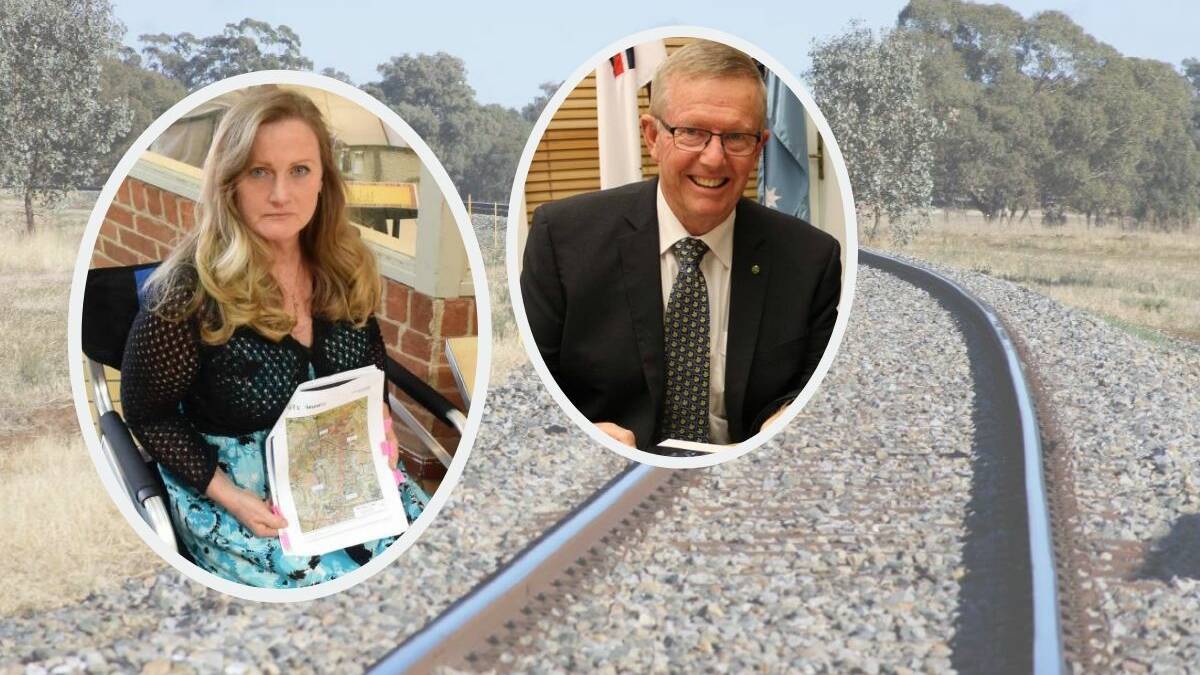
It's business as usual for the Narromine Inland Rail Action group and its supporters as the Liberal-National Coalition step back into power.
Subscribe now for unlimited access.
or signup to continue reading
The return will see the go ahead of the Coalitions $10 billion inland rail project, building 1700 kilometres of freight line from Melbourne to Brisbane. However critics are still concerned about its impact on floodplains and the 300-odd farms it might cut through.
Narromine's Jennifer Knop has been campaigning for a review since the plans were first announced.
"The Narromine Inland Rail Action group and our connected and supporting groups along the entire route did not sit back and wait for an election result," she said.
"We continue to insist on an inquiry. We will continue to strongly question the route selection process.
"We are still supported by NSW Farmers and the Country Women's Association of NSW as well as other supportive groups with our demand for an inquiry.
"This has not changed. It is business as usual."
However, Member for Parkes Mark Coulton remains firm behind the "once-in-a-generation project" which he said will connect rural and regional Australia to global markets.
"I am proud to be part of a government that will not hide from delivering the infrastructure the Parkes electorate needs to drive economic growth, increase productivity and connectivity, and create new jobs," Mr Coulton said.
READ ALSO:
"Regional businesses and farmers want to take advantage of new opportunities for export growth, and get their produce to market faster.
"They also stand to benefit from a cost-saving perspective - farmers and business owners using the inland rail could cut transport costs by up to $94 per tonne.
There has been much controversy over the Narromine section, when the Federal Government announced its preferred study corridor (about two kilometres wide in some areas), which hooked around the south-eastern edge of Narromine and took in the 'premier, small-block estates' of High Park and Villeneuve.
"Why are they coming across our floodplain, why don't they have the necessary data, why don't they have the planning in place before they come across here," Mrs Knop said.
"They did 10 years of planning on the western side, then at the last minute, within six months, they're coming to the east, through our high density housing here, all of our estates, they're coming through our farming business, why are they doing this?
"They talk about minimal impact, well they couldn't have picked a route that has any higher impact. There's a lot of ways they can do this."
Mr Coulton said the Federal Government is forging ahead with the project, which has been informed by extensive studies.
"The Inland Rail corridor has been informed by extensive studies over the past decade and delivers the best outcome for the overall Inland Rail project, Australian taxpayers and our national and regional economies," he said.
"Community feedback is being fed into the design of Inland Rail. Following this, the Environmental Impact Statement will be lodged with the State Government for planning approval.
"To ensure the feedback is collected in a meaningful way, Australian Rail Track Corporation (ARTC) has been directed to set up Community Consultative Committees along the alignment.
"An Inland Rail inquiry would only serve to drag out uncertainty for landowners, both on the preferred corridor and on other options."
Mrs Knop said that the election result is not a rejection of inland rail concerns, and they will continue to hold the federal government and the ARTC accountable for their decisions.
"The ARTC and the government have always rejected our concerns," she said.
"The ARTC know that their consultation was inadequate, that they incorrectly estimated our flood risk and have admitted they have no idea how to address the risk.
"We will continue to hold them accountable."


